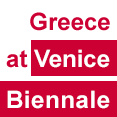|
During the Interwar Period, the Venice Biennale continued to attract the attention of the international art community. Despite the catastrophic consequences of the war, many countries regarded the institution as a unique opportunity to promote their art production. The progressive voices were leading within the countries, sustained by the belief that through the re-establishment of the international art dialogue they would be able to override the nationalistic divisive voices. Thus, immediately after hostilities ended and until the outbreak of World War II, the construction of new national pavilions began: Spain (J. De Luque, 1922), Czechoslovakia (O. Novotny, 1926), United States of America (Ch. H. Aldrich, W. A. Delano, 1930), Denmark (C. Brummer, 1932), Austria (J. Hoffmann, 1934), Greece (G. Papandreou, B. del Giudice, 1934), Germany (complete reconstruction of the former pavilion, E. Haiger, 1938) and Yugoslavia, Romania and Poland (B. del Giudice, 1938).
On the organisational level, the Italian government realised that the Biennale was not merely a peripheral and ephemeral cultural event. It thus issued on 13 January 1930 a Royal Decree which transformed the Biennale into a legal entity governed by public law. Along with the new legal status, the Music (1930), Cinema (1932) and Theatre (1934) sections were established, as well as the first Grand Prizes for each artistic section.
During the first post-war period the Biennale shifted its interest towards the more innovative artistic movements and it tuned in with the wider international progressive spirit of the times, thanks to the initiative taken by the new General Secretary, Vittorio Pica, a well-known art critic and author of numerous publications on Impressionism.
For the 1920 Biennale, the French artist Paul Signac curated the exhibition of 17 of his works, as well as of works by Cézanne, Seurat, Redon, Matisse and Bonnard for a group exhibition at the French pavilion, while the Netherlands and Switzerland organised retrospectives of Vincent van Gogh and Ferdinand Hodler respectively.
In 1922 the organisers, in spite of the reactions and negative comments by the conservative members of the audience, showcased the first retrospective of Modigliani at the central pavilion and successfully matched it with a special Post-Impressionist tribute to African sculpture. The remarkable exhibitions organised by France, as well as the definite influence it was by then exercising on the artistic choices of the Biennale, continued during the interwar period with the presentation of many retrospectives (Gauguin, Toulouse-Lautrec, Monet, Degas, Renoir) and the presentation of a series of solo exhibitions by contemporary artists such as Matisse (1928), van Dongen (1930) and Zadkine (1932). During the same period, Great Britain organised interesting group exhibitions showing work by remarkable artists such as Epstein (1924, 1926, 1928, 1930, 1938), Moore (1930) and Nicholson (1934), while before the Nazis came to power Germany presented the work of the most significant representatives of German Expressionism, such as Marc, Nolde, Klee, Dix, Hofer, Beckmann, Kirchner and Schmidt-Rottluff.
Finally, also worth noting was the work of Italian Futurists, who reappeared on the scene during the interwar period on three different occasions. In 1926 and 1936 Marinetti, in his capacity as a Commissioner, curated two important group exhibitions showing the work of Italian Futurist painters at the Soviet Union pavilion: the first was realised within the frame of the then friendly relationship between the Futurist Movement and the Soviet Union, and the second under the looming shadow of the Spanish civil war and the conquest of Ethiopia. The Futurists were presented for the last time at the Padiglione del Futurismo Italiano in 1942, ideologically aligned with the fascist regime's propaganda.
The course of the Biennale changed radically during the interwar period with the gradual rise to power of fascism. At the beginning of the '30s, when the change to the institution's legal status took place, the political intentions of the central government of the time were already starting to become evident when it ended the immediate management of the Biennale by the Municipality of Venice. The situation worsened by the end of the decade when the fascist government joined forces with Nazi Germany and the stifling political control expanded into all the existing structures of the national art system. The persistent interference by the regime regarding the exhibited works and the artistic choices at all the large fine arts events became even more intense, eventually resulting in the modification of the Biennale's articles of association in 1938 and complete political control by the central government over the whole organisation and the representatives appointed for each event by the fascist party.
The course of events in the domestic political scene as well as the impact of Italy's international isolation left obvious traces at the Biennale of 1942, the most propagandist exhibition in the history of the institution, with only ten participating countries and with exhibitions dedicated to soldier artists.
In 1944 and 1946 the Biennale froze its activities due to World War II.
|


